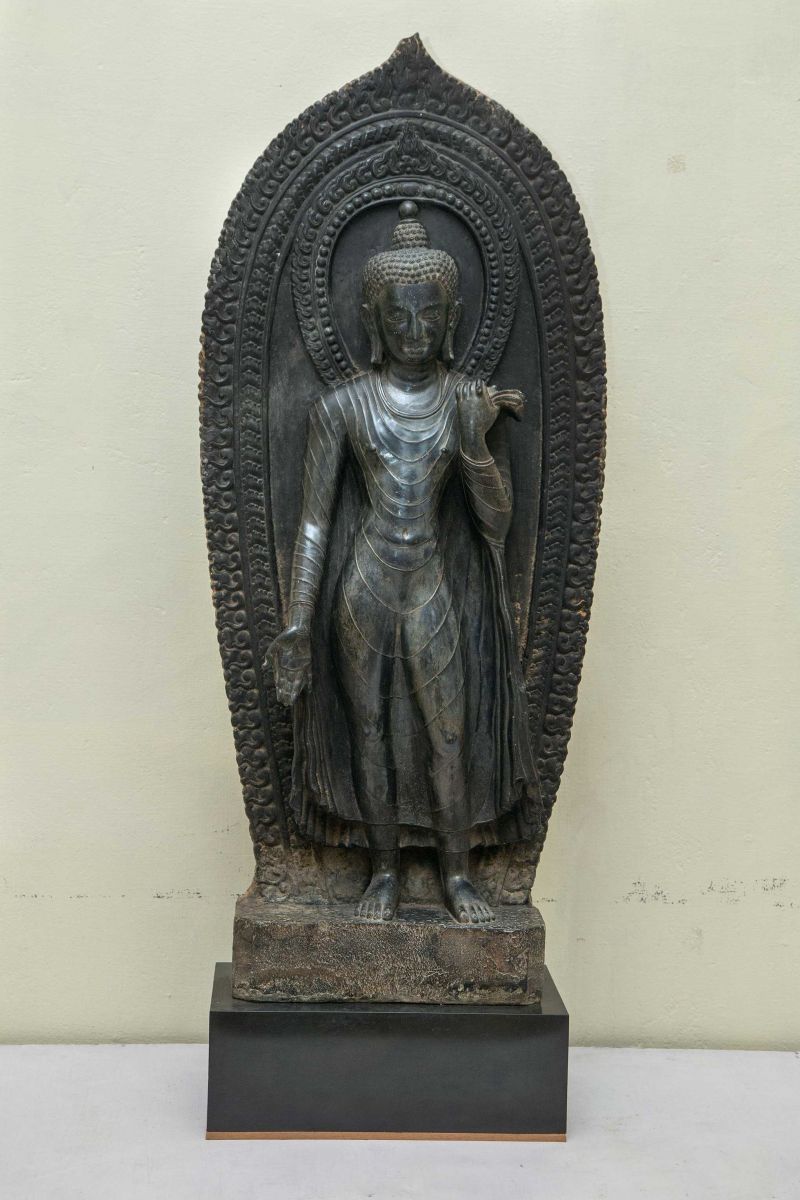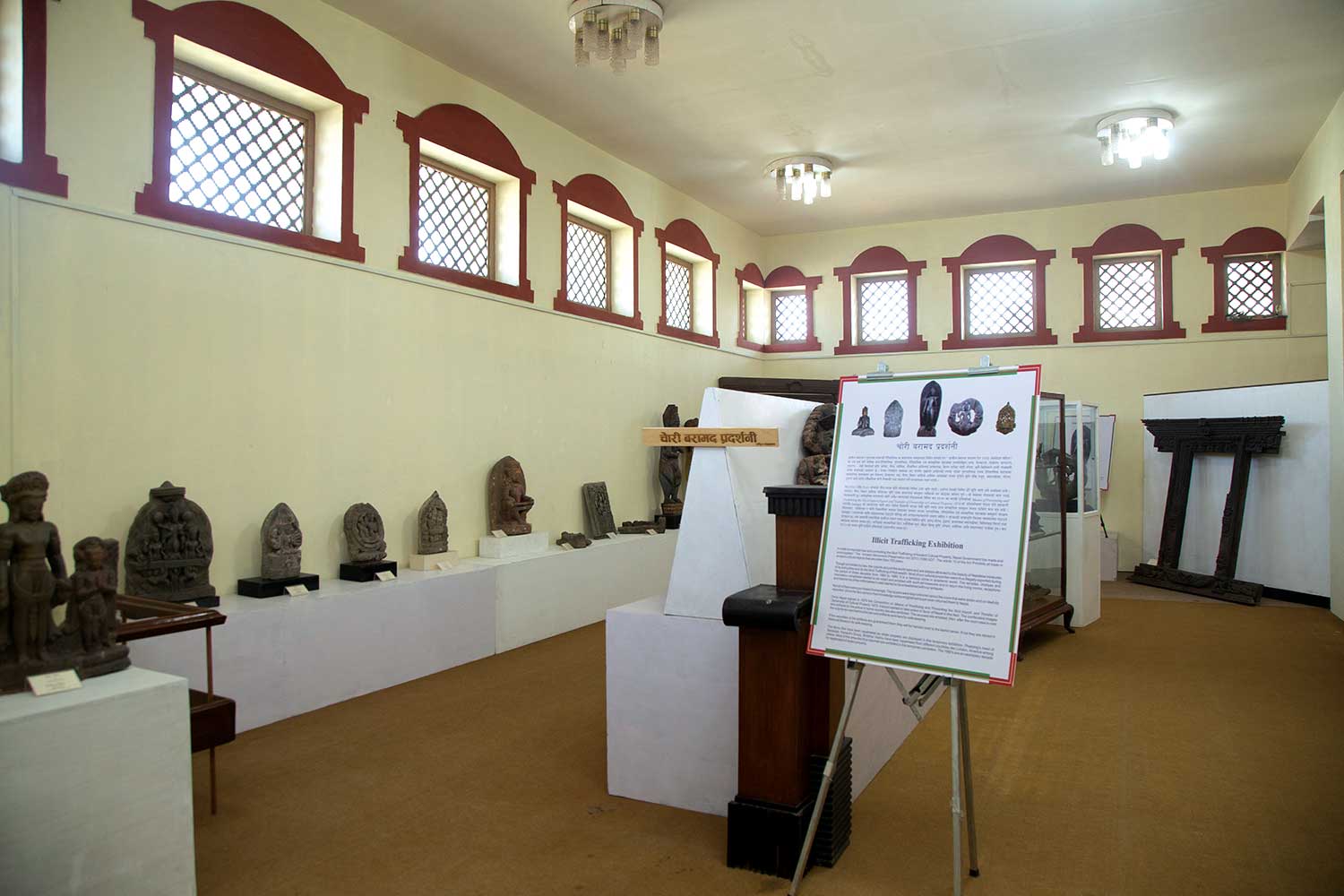Cultural objects in the form of art, manuscripts, coins, statues, paintings and even traditional buildings have fascinated mankind, with respect to the creativity, skill and technology of their ancestors. Throughout global history, such cultural objects have been in the limelight both during times of conflict and war, as well as peaceful eras and in recent times have become objects of scientific interest, too. Because of their high value and rarity, they have become victims of illicit trafficking, gaining prominence since the colonial days of  imperialism. During this time, dominant countries looted cultural properties through war booty, paying troops, gifts to dignitaries and through trading and exchange, relocating the cultural property to new territories and removing the essence of their original context.
imperialism. During this time, dominant countries looted cultural properties through war booty, paying troops, gifts to dignitaries and through trading and exchange, relocating the cultural property to new territories and removing the essence of their original context.
Ancient texts of Christianity, Islam and Hinduism, mention acts of violence being restricted to religious property and it was forbidden to destroy or ruin any cultural or civic property; warfare as a rule was confined only to combatants. However down through the centuries, these ancient teachings and practices have been forgotten and deliberate destruction of cultural property to totally eradicate a particular history was practiced, especially during the twoWorld Wars. It was only in the mid 18th century, under the leadership of Jean-Jacques Rousseau, that a distinction was made between military objectives and civilian objects and persons. During World War II, in 1943, a draft was declared to call for “a general international organization, based on the principle of the sovereign equality of all nations.” (https://history.state.gov/milestones/1937-1945/un). And finally on October 24, 1945, the United Nations came into existence after 29 nations ratified the Charter. Thus this marked the early 19th century as the first era of decolonization. Regaining lost sovereignty, many countries started a campaign to claim the return of cultural property lost during the colonial period. Some of the most famous repatriation claims are of the Elgin Marbles to Greece, the Benin Bronzes to Nigeria and the Rosetta Stone to Egypt, from the collections of the British Museum. The underlying argument for repatriation being their vital contribution to the national identity and history as well as the knowledge and skill of their ancestors.
Policies protecting buildings and objects of cultural significance were formulated as early as the mid-eighteenth century and in the late 19th century, with the Brussels Declaration of the protection of cultural  property during war. The Hague Convention in the early 20th century repeated the same and prohibited the seizure of cultural property, both private and belonging to the state. However these laws were unable to protect the and prevent the illicit trafficking and widespread damage of cultural property in both the World Wars and even after. It was only in 1954 that the Hague Convention for the Protection of Cultural Property in the Event of Armed Conflict was promulgated and put into practice. It clearly stated: the protection of such property to transcends cultural, national or religious divides. As far as principles are concerned, cultural property should be respected and protected in its own right, as a part of humanity’s common heritage and irrespective of the cultural tradition to which it belongs. Two years after the Hague Convention, Nepal adopted the "Ancient Monument Preservation Act 2013,” (1956 AD) to preserve the ancient monuments and for controlling the trade in archaeological objects and excavation of the places of ancient monuments and by acquiring them and other archaeological, historical or artistic objects. This act has had numerous amendments over the years.
property during war. The Hague Convention in the early 20th century repeated the same and prohibited the seizure of cultural property, both private and belonging to the state. However these laws were unable to protect the and prevent the illicit trafficking and widespread damage of cultural property in both the World Wars and even after. It was only in 1954 that the Hague Convention for the Protection of Cultural Property in the Event of Armed Conflict was promulgated and put into practice. It clearly stated: the protection of such property to transcends cultural, national or religious divides. As far as principles are concerned, cultural property should be respected and protected in its own right, as a part of humanity’s common heritage and irrespective of the cultural tradition to which it belongs. Two years after the Hague Convention, Nepal adopted the "Ancient Monument Preservation Act 2013,” (1956 AD) to preserve the ancient monuments and for controlling the trade in archaeological objects and excavation of the places of ancient monuments and by acquiring them and other archaeological, historical or artistic objects. This act has had numerous amendments over the years.
In response to the continuous illicit trafficking and theft of cultural property from museums, archaeological sites and private possession at the end of the 1960s and in the beginning of the 1970s, the Convention on the Means of Prohibiting and Preventing the Illicit Import, Export and Transfer of Ownership of Cultural Property was created in 1970, to address such situations. This convention required state parties to take initiatives in preventive measures, restitution provisions and international cooperation framework of cultural property. Despite all these efforts by the UN and other international agencies, the laws of restitution is applicable for cultural property imported or exported only after the Convention came to force after the 1970s. The bright side though, is that the convention will however provide cooperation for restitution of cultural objects imported or exported before the convention.
Despite these efforts by the state as well as international parties, the illicit trafficking of cultural property is an ongoing activity, and is in fact a challenge to security forces globally. In Nepal, these issues have been brought to the public and state notice through two publications, Stolen Images of Nepal by Lain Singh Bangdel, a leading authority on Nepalese art, and The Gods are Leaving the Country by Jürgen Schick, which provide photographs and details of art stolen between 1960 and 1989. Taking inspiration and reference from these two books, ‘Remembering the Lost Sculptures of Kathmandu’ an exhibition of paintings and research by American researcher Joy Lynn Davis at Nepal Art Council in April 2015, brought public awareness, and opened dialogues about art theft and trafficking, providing a forum for discussions. She revisited the sites of theft, made paintings of the site and in the paintings replaced the original deities in gold. This exhibition was the first of its kind to make a visual remembrance and awareness on the topic of the theft and trafficking of cultural .jpg) objects in Nepal. A visual graphical presentation showed artworks lost from 1960-2010, with the largest number, 55 artworks, lost between 1980-84, and 33 going missing between 1985-99.
objects in Nepal. A visual graphical presentation showed artworks lost from 1960-2010, with the largest number, 55 artworks, lost between 1980-84, and 33 going missing between 1985-99.
In contrast to this exhibition, a current temporary exhibition is being showcased at the National Museum, Chauni of art objects lost and found locally and those repatriated from international institutions and personal collections. All art objects found nationally or repatriated from foreign countries are stored at the National Museum. Before the earthquake of 2015, a permanent gallery in the Silkhana building was dedicated to the exhibit such objects, however the building was damaged in the earthquake, closing the exhibition. The Silkhana building is now closed, though plans are being made to reopen the gallery again.
The highlight in this exhibition are the two images of the Buddha and Uma Maheswara repatriated from the Metropolitan Museum of Art last year. The statue of Uma Maheshwara (from Tangalhiti, Patan) is from the 17th CE. Such images of Uma Maheswara have been made in Nepal since the pre-Lichhavi period and have found continuation through the centuries. They form a continuous development of the composition and the iconography, thus this repatriated image fills a gap in this development. Likewise, the statue of Buddha, which dates back to the 7th CE, is an invaluable image which reflects the ties between Sarnath, India and Nepal during that time. Upon knowing that both of the images were stolen, the museum removed them from their display. Both the images were mentioned in the book Stolen Images of Nepal by Lain Singh Bangdel. Many other images find their place in this exhibition, some returned from foreign nations and many returned from police offices in Nepal. Besides many other responsibilities of the National Museum, its initiative to bring to the forefront issues of illicit trafficking and the possibilities of repatriation is commendable. Such awareness programs will educate people and cause them to have a better understanding of the protection and preservation of cultural property, which according to the Hague Convention of 1954 are ‘part of humanity’s common heritage.’
The author is a scholar of Nepalese culture, with special interest in art & iconography. She can be reached at swostirjb@gmail.com

Buniya to Kick- start Shri Panchami
Buniya To Kick-start Shri Panchami Every year, on the day of Shri Panchami (Basant Panchami), I remember waking up...









